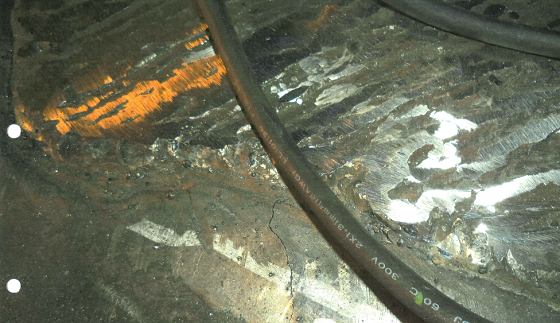An innovative high-velocity thermal spray (HVTS) cladding solution was able to slow corrosion at a U.S. refinery where multiple previous technologies had failed, according to surface protection solutions company Integrated Global Services, Inc. (IGS) (Richmond, Virginia, USA).
IGS specializes in the development and optimization of its HVTS process technology, materials technology, application procedures, and field personnel capabilities. In this case study, IGS was called on as a service provider for the refinery site.
Need for a Permanent Solution
During a recent routine inspection, the U.S. refinery had identified problems with its second-stage desalter and its overhead accumulator vessels, according to the specialist.
A nickel-copper thermal spray (TS) coating had been applied in both areas approximately 20 years ago. Initially, the coating performed as expected, IGS explains. Over time, however, localized damage was evident on the bottom third of both vessels.
Initially, various organic coatings were chosen for patch repairs to the bottom of the shell. These coatings needed to be applied repeatedly every four to five years. In 2014, an inspection revealed areas where both the historical nickel-copper TS coating and organic patch repairs had worn away completely, leading to deep pitting and metal wastage beyond existing corrosion allowance.
Moreover, when weld repairs were attempted adjacent to the failing TS, a crack formed on its heat-affected zone. In 2017, engineers at the refinery sought out a more permanent solution.

Limitations of TS Coatings
According to the specialist, typical TS coatings are not always suitable for the internal protection of process equipment due to their permeability, weaker bond strength, and propensity of cracking. Moreover, TS systems cannot produce flat and tightly-packed particle sizes or nano-scale grain structures, leading to the coating’s failure due to corrosion and/or permeation.
In addition, the cladding particles of TS materials form surface oxides in flight, the specialist explains. These oxides then form part of the applied TS structure and are permeable, creating a pathway for corrosive media to penetrate through the coating. This, in turn, leads to subsequent substrate corrosion, and premature TS failure.
When applied at high thicknesses, TS structures are inherently highly stressed, and such highly stressed coatings have a high propensity to crack and subsequently fail in service, the specialist explains.
Upgrade of HVTS Cladding
By contrast, the specialist says the HVTS cladding solution utilizes next-generation alloy materials to provide erosion and corrosion protection, even in high-temperature service up to 2,500 °F (1,371 °C).
“Both organics and weld overlay were evaluated as potential options by the refinery,” IGS writes in its case study. “Given the upgraded metallurgy and the time savings of HVTS compared with overlay, the refinery project manager welcomed this proposal, and HVTS work was scheduled for the spring of 2019."
The specialist’s crew began by blasting each unit, which then allowed the refinery’s quality control team to inspect and address any issues with the substrate. The overhead accumulator required no mechanical work, whereas the first stage desalter had to be welded due to deep pitting that occurred during the wearing of the previously applied coating.
Ultimately, the HVTS application was completed on time and within schedule, even accounting for unexpected delays. The bottom third of the overhead accumulator, including the stem pipe with a vortex breaker and a flange, were protected with the cladding. Meanwhile, on the crude desalter, HVTS was applied from the 5 o’clock to the 7 o’clock positions of the vessel and the manway, according to the crew.

Final inspection of the work scope involved the generation of a cladding thickness record for the protected area, complete with mapped electromagnetic stand-off gauge readings on a defined reference grid. This record will be used for future inspection and verification of the cladding’s integrity.
According to the specialist, HVTS cladding systems can be readily inspected visually for signs of deterioration, with thickness measurements taken utilizing a magnetic liftoff gauge.
Source: IGS, www.integratedglobal.com.